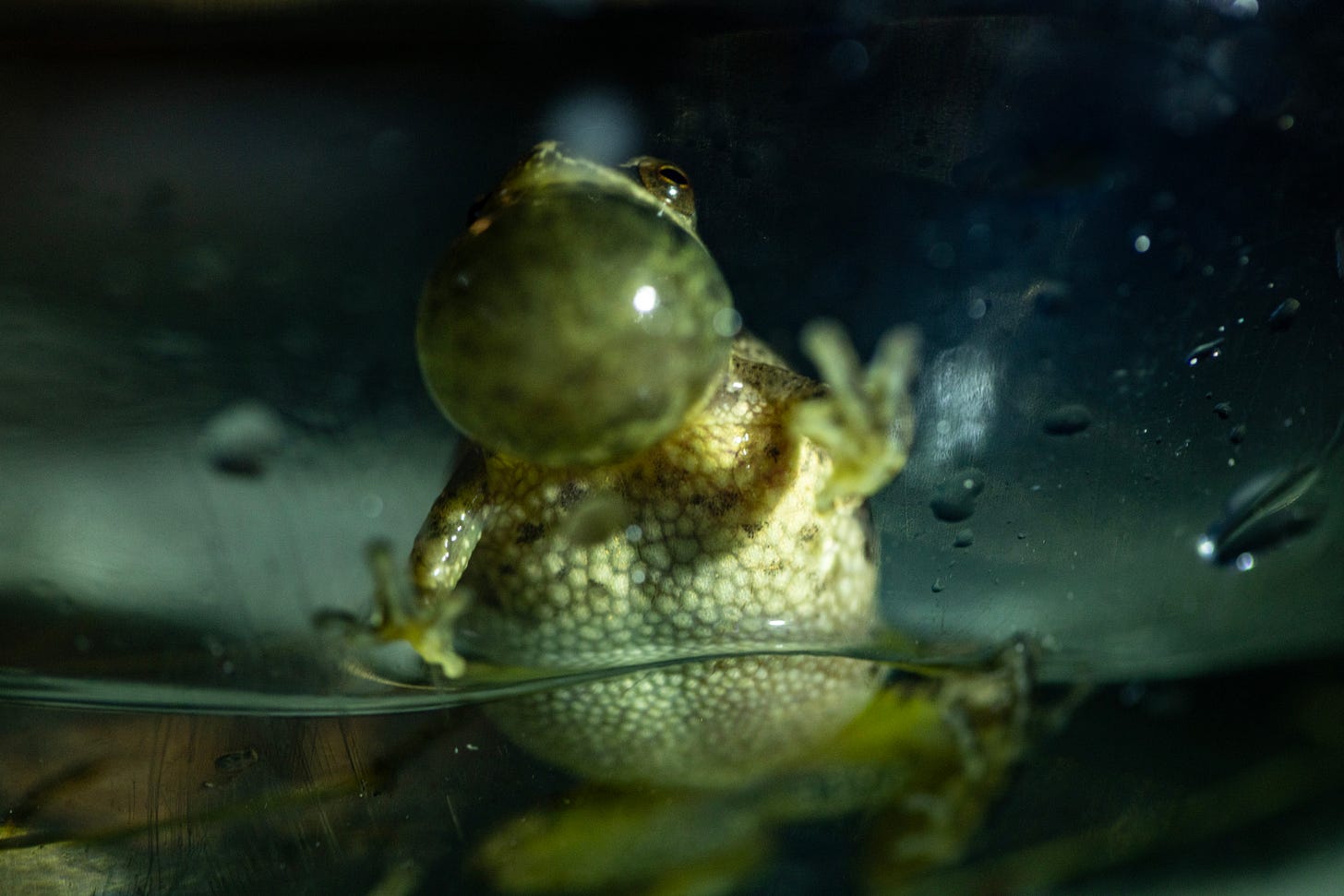Sound on! Do you recognize that chorus?
ecotone #03: If you’ve seen these itty-bitty vocalists up close, the clue “X marks the spot” might help you identify the singers.
ecotone is a guessing game. I share an audio clip, plus a clue. You name the nature sound.
The clue for ecotone #03 was:
“X” marks the spot
The answer is:
Spring peepers
Did you guess correctly?
Male peepers use a vocal sac to amplify their mating call. Close up this spring peeper looks huge, but these treefrogs could sit comfortably on the pad of your index finger.
When evening temperatures begin to warm, male peepers make their way to seasonal ponds and other swampy stretches of forest. There, they send up a ruckus of repetitive peeps to lure females. Wooed by the night song, females follow the sound and choose a partner. The female finds the perfect underwater plant where she can lay her eggs, and once the matched pair is in their mating “embrace,” the male releases sperm to fertilize the eggs.
Are baritones the best lovers? Some studies suggest that female frogs are more attracted to male peepers with lower-frequency calls.
Spring peepers are just ¾ to 1 ¼ inches long.
Their small size and camouflage make peepers hard to spot as they hide among wetland reeds and rushes. Look for a slightly pointed snout, toe pads and the tell-tale X-shaped marking.
The treefrog chorus reminds some people of tinkling bells. I think peepers sound like squawking chickens – but like a mob of them.
The scientific name Pseudacris crucifer includes the Latin root “cross-bearing,” a reference to the distinctive pattern on the frog’s back.
No ear flaps? No problem.
Each spring there’s a lot to say about the musicality of peepers. But hardly anyone mentions how an animal without visible ears takes in all that noise.
Frogs and toads have tympanum, a drum of sorts — one behind each eye — that sends sound to the animal’s internal ears.
Thanks for playing ecotone. What nature sound should I collect next?

















Share this post